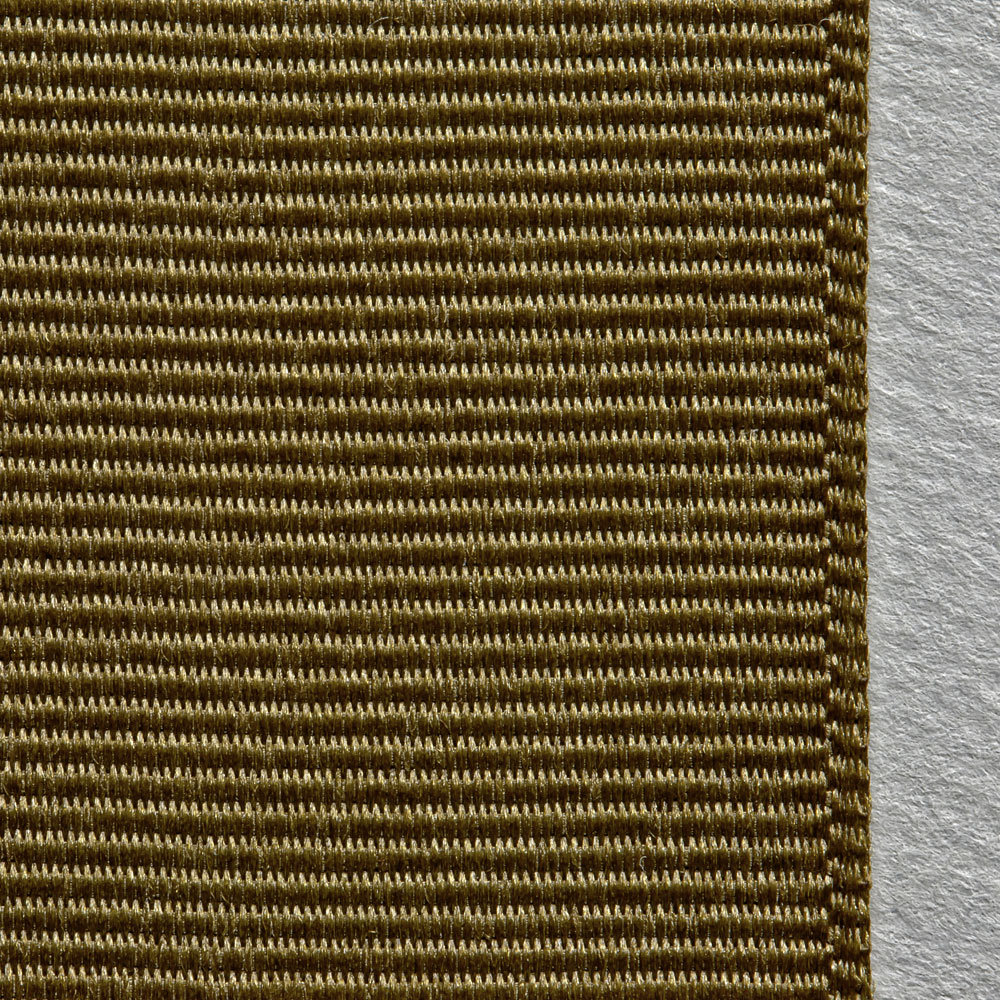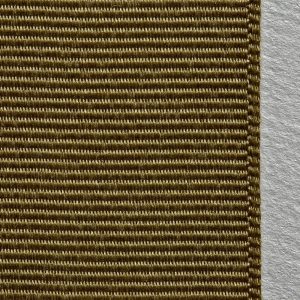Best known in ribbon width, grosgrain may also be fabric. It shares with other horizontally-ribbed fabrics a plain weave with heavier weft yarns and finer and more plentiful warp yarns. As compared to faille, the ribs are rounder. The warp is characteristically silk or rayon with the weft being cotton, sometimes silk.
The name comes from the French gros (coarse or large) and grain (grain or texture).
Uses: Ribbon for trim, hatbands; fabric for dresses, skirts, spring coats
See also:
Bengaline
Faille
Ottoman
Rep
Taffeta

